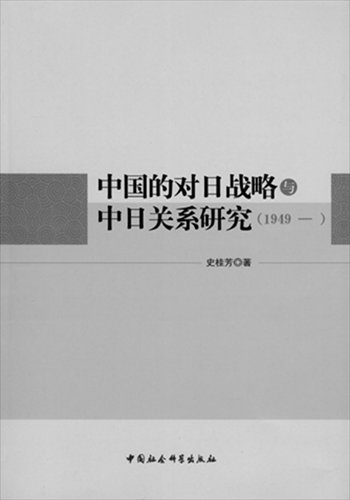HOME >> OP-ED
Sino-Japanese leaders' hard work on friendship shouldn't be discarded
Source:Global Times Published: 2014-4-24 23:03:01

Shi Guifang, China's Japan Strategy and Study on Sino-Japanese Relations (1949-), China Social Sciences Press, March 2014
The most troublesome bilateral relationship China has is with Japan, which has had complicated ties with China throughout modern history. The two countries have been at peace for nearly seven decades, but there are still many barriers hindering the relationship from moving forward.
Since Japanese Prime Minister Shinzo Abe retook office in December 2012 and re-employed a series of aggressive strategies targeted at China, the Sino-Japanese relationship has descended to a low part.
Challenges and bouts have provided sufficient materials and opportunities for both Chinese and Japanese scholars to observe each other. How to deal with this delicately significant bilateral relationship is a tough task for them.
Sino-Japanese relations, intertwined with many historical, geopolitical and national security issues, cannot be sorted out just from one specific perspective. It requires a general picture as well as case-by-case analysis.
China's Japan Strategy and Study on Sino-Japanese Relations (1949-), written by Shi Guifang, professor at the College of History, Capital Normal University, delivers an in-depth observation of what Sino-Japanese relations have gone through after 1949, and tries to draw lessons and experiences from the nearly seven decades of exchanges.
Unlike some other books which base their studies on secondhand resources, Shi's book contains a great number of firsthand materials, based on which her research is able to produce more fact-oriented conclusions.
This book looks at Sino-Japanese relations from a macro perspective, trying to give a comprehensive picture of China's Japan policy and how it has been transforming in different international situations. It also supplies an academic analysis in chronological order about the whole development of bilateral relations. Readers can understand how the Chinese government has been endeavoring to boost the bilateral relations at different times.
This book argues that the Sino-Japanese relationship, which has previously been labeled as "friendly," has surpassed the phase that both sides develop the relationship for the sake of friendliness.
As economic and political interactions between both sides are increasingly deepened, national interests have a bigger say in bilateral relations. This is the crux of why so many divergences have emerged in recent years.
But the book believes that the historical foundation of friendly exchanges in recent decades can play a key role of reinvigorating the declining bilateral relationship.
It suggests that although now China and Japan are engaged in a spat over territorial disputes and historical issues, the two sides must insist on the fact that both are beneficiaries of a comprehensively strategic and mutually beneficial relationship, which is the result of hard work of generations of leadership. This framework is able to serve as a guideline for both sides to resolve their issues.
This book offers a positive outlook for the Sino-Japanese relationship, which is perhaps expected by many people of both nations. But whether the goal can be realized depends on how China and Japan deal with the most stubborn issues.
Posted in: Fresh off the Shelf